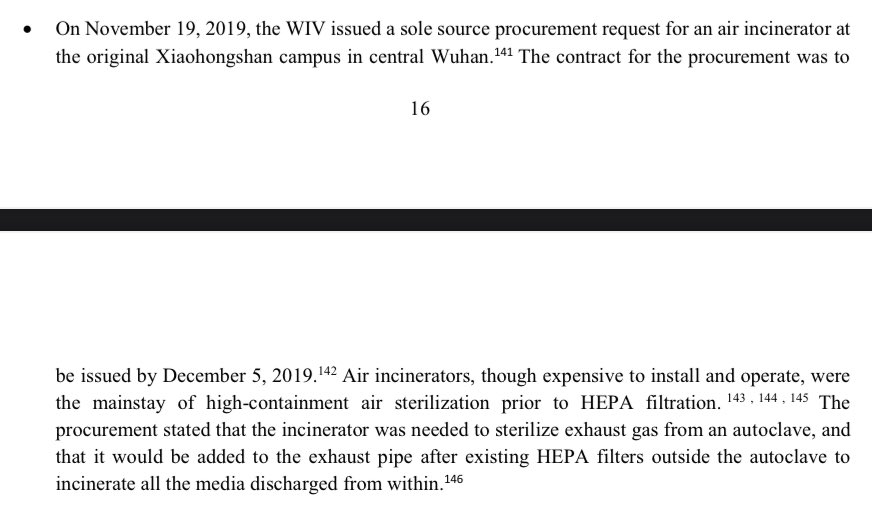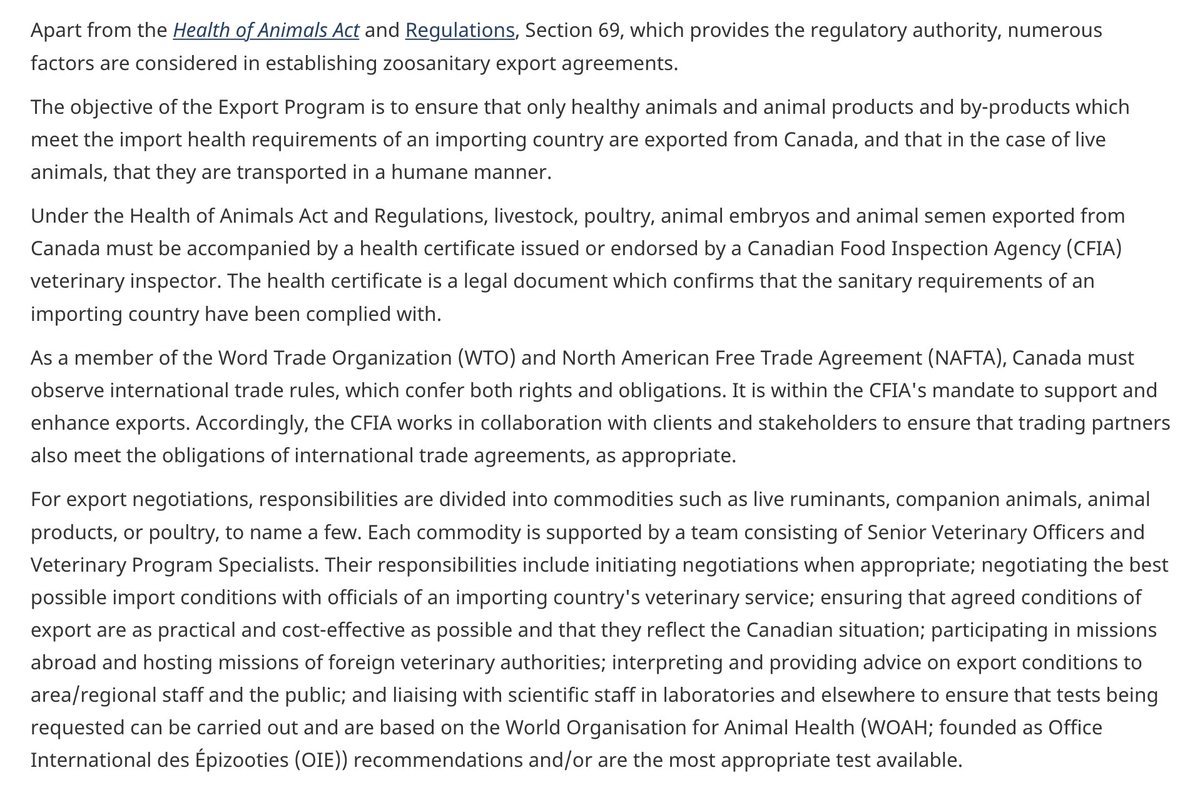The recent Senate report on COVID origins is overtly political & contains many factual errors.
Some of the most glaring are extremely basic but may not seem so to a non-virologist. As I am a virologist, I can help. Let’s talk about biosafety at WIV.
nytimes.com/2022/10/27/sci…
Some of the most glaring are extremely basic but may not seem so to a non-virologist. As I am a virologist, I can help. Let’s talk about biosafety at WIV.
nytimes.com/2022/10/27/sci…
The report contains a lengthy section regarding biosafety lapses at WIV. It claims to show evidence of multiple biocontainment breaches.
That sounds very bad! But how reliable is this evidence?
help.senate.gov/imo/media/doc/…
That sounds very bad! But how reliable is this evidence?
help.senate.gov/imo/media/doc/…

First thing people need to know about working in biocontainment is that it’s not a “set it and forget it” mentality. You don’t build a containment lab and say, all done, let’s get to cooking up SARSr-CoV chimeras. Biosafety is a constant effort.
I work in one of the largest BSL3 labs in the world. I handle infectious SARS-CoV-2 on a near daily basis. Biosafety & biocontainment is at the front of my mind in everything I do. I have multiple colleagues whose full-time jobs are dedicated to the integrity of our lab.
There are multiple levels where biosafety protocols are implemented: all the way from individual (appropriate PPE & proper training) to the facility design & infrastructure (negative pressure, HEPA filters, waste disposal) to administrative (operational procedures, security).
Part of facility operations include regular maintenance. You make sure air handling is operating normally, the autoclaves are working, etc. Sometimes equipment breaks, so it’s replaced. Sometimes you realize there’s a better alternative, so you upgrade it.
The goal is to conduct essential research as safely as possible and constantly assessing whether that safety standard is met. If you can improve, you do—BEFORE a breach. Biosafety is about avoiding containment failures, not reacting to them.
That’s what I see in this report.
That’s what I see in this report.
So when I see stuff like this, it seems pretty normal to me. Another key part of facility design is system redundancy. Here, WIV patented an auxiliary exhaust fan to maintain an air pressure gradient. You maintain negative air pressure in labs so pathogens can’t float out. 

Here, WIV procured a vaporized hydrogen peroxide system to disinfect air coming from the lab. They even explain why they procured it: it’s less corrosive than an alternative. It’s an example of proactively upgrading critical equipment, not evidence of biosafety failure. 

Same here. They were renovating the HVAC system to ensure lab air was contained in the lab. This is not evidence that any of the things they were explicitly trying to prevent (reversal of airflow, re-circulation of lab air) had ever occurred. 

Another purchase of air decontamination equipment. Again this is a redundant system: rather than relying on filters alone, they bought a system to sterilize lab exhaust air prior to HEPA filtration. It shows there were multiple processes in place to prevent a containment breach. 

Here WIV invented a sensor to detect HEPA filter malfunction on equipment used to transfer animals between labs. It improves function of containment measures, which again will be redundant (staff will also wear PPE, & the building itself has all the air handling stuff above). 

And they invented a new disinfectant formulation. Liquid disinfectant is essential & we use it by the literal bucket. Many labs use Microchem, which is very effective but corrosive over time—it eventually wears out other equipment. Where can I get some less corrosive Microchem? 

And…that’s it. No evidence of a breach or biosafety failure, but lots of evidence that they were operating a containment lab in a pretty standard way, with one exception: WIV was more innovative than many others and patented some of the bespoke systems they developed.
Which brings me to this. OMG in addition to upgrading and purchasing equipment for lab operations, they were also dealing with budget, procurement, and administrative issues, and as a result they were (gasp) MAKING POLICIES AND DOING BIOSAFETY TRAINING 

This shows the high cost of maintenance. It’s true that BSL3/4 labs are expensive to operate (see lots of purchases above—infrastructure ain’t cheap). But here they identify this as a potential problem. Fixing problems before they cause a breach is essential to biosafety. 

And one way to address issues of working with pathogens in substandard biocontainment is to pass laws preventing it and administratively regulate what labs can do certain research. Laws like this one. 

And they were having a tough time getting equipment, which explains why they were so inventive. They also had meetings to remedy these shortfalls and to manage biosafety more effectively. 



And November 12, they reported that they solved a lot of these problems! Contrary to the Senate report, as well as a lot of linguistic speculation by the Chinese secrets “expert” profiled in that Vanity Fair/ProPublica piece about it, there is no mention of a biosafety failure. 



Now I’m not an expert in Chinese secrets or marginalia and I don’t speak Mandarin, but @zhihuachen has a great thread about how this report was actually just bragging to their bosses that aforementioned issues were solved, now let’s get back to safely kicking some virology ass.
https://twitter.com/zhihuachen/status/1586271619684896769
I did like this part. I routinely work for 4+ hours in containment. Experiments take time. It’s not “an extreme test of will & physical endurance.” It’s a normal afternoon at work.
Burr may want to consider hardier staff, if they imagine a few hours of pipetting are so taxing.
Burr may want to consider hardier staff, if they imagine a few hours of pipetting are so taxing.

And then WIV also had some biosafety training. Working in containment is “complex and grave” in that you need to be serious about biosafety & ready to respond to failures. That means you need to be properly trained. Training is ongoing & is part of how you prevent breaches. 

And that’s it! No evidence of a biocontainment breach or a biosafety failure, other than lab leak fan fiction invented by people with no clue about how biosafety actually works reading documents that reflect the daily considerations & challenges of operating a containment lab.
Let’s hope that the bipartisan investigation which Sen. @PattyMurray said is ongoing consults experts who actually understand how operational biosafety works rather than a bunch of political science majors & Chinese secret translators.
• • •
Missing some Tweet in this thread? You can try to
force a refresh








